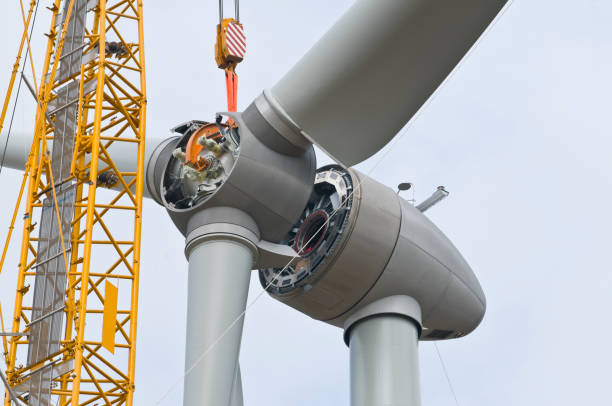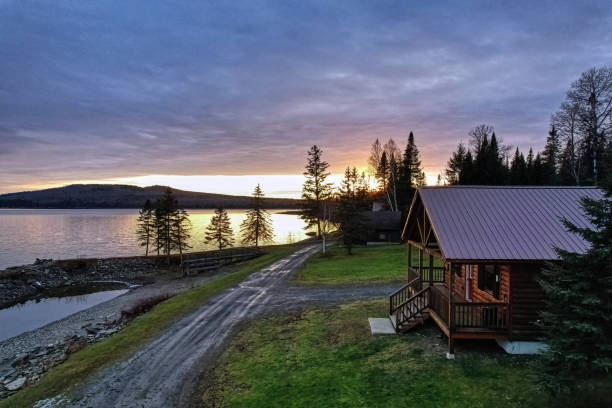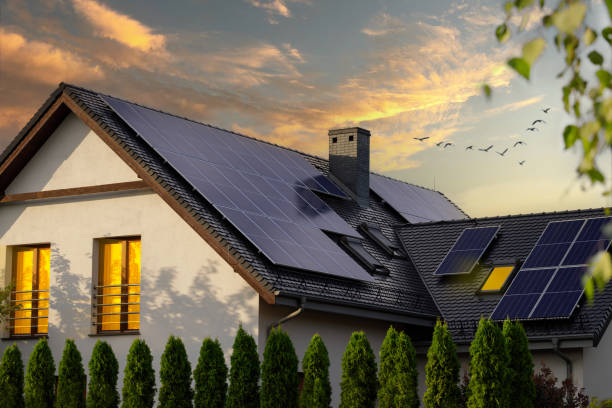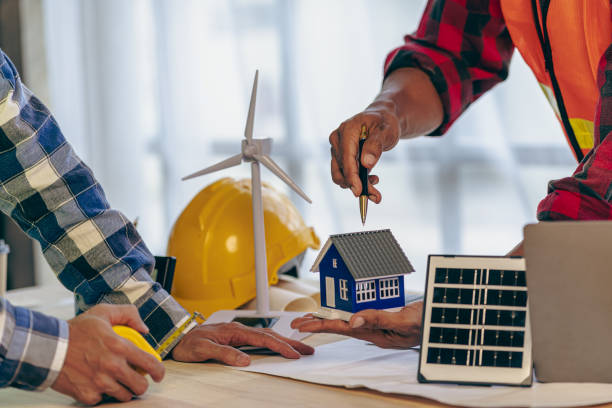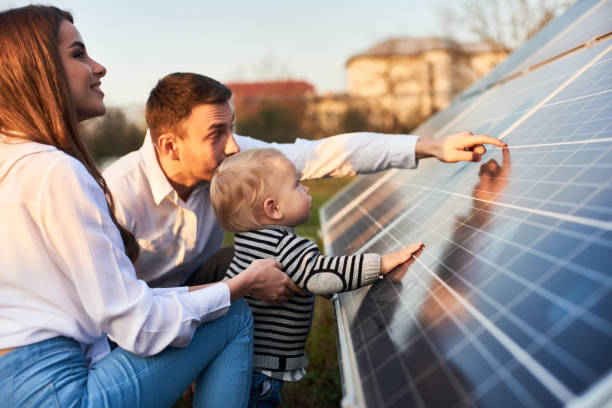Small Wind Turbine Designs
In an era where sustainable energy solutions are more crucial than ever, small wind turbines have emerged as powerful symbols of innovation and environmental consciousness. Harnessing the natural force of the wind, these compact giants provide a beacon of hope in the pursuit of cleaner, greener energy alternatives. As the world grapples with the challenges of climate change and depleting fossil fuel reserves, small wind turbines stand at the forefront of a renewable energy revolution, promising a future where communities can generate their own electricity in an eco-friendly manner.
This blog post delves into the intricate world of small wind turbine designs, exploring their significance, diverse types, and the innovative technologies that propel them forward. With a focus on sustainability, efficiency, and adaptability, this exploration will shed light on how these unassuming structures are transforming the global energy landscape.
Table of Contents
Benefits of Small Wind Turbines
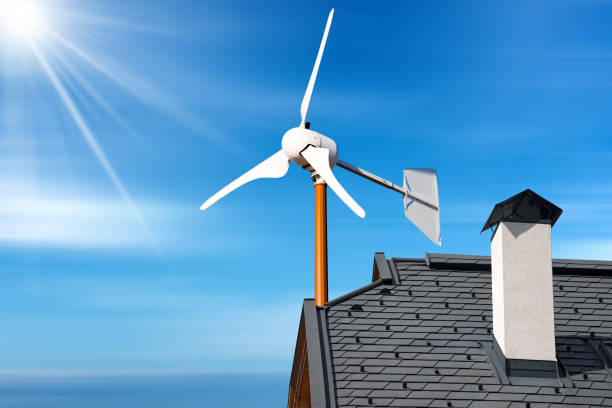
In the face of escalating environmental concerns and the pressing need for energy diversification, small wind turbines offer a multitude of benefits that make them indispensable components of the renewable energy toolkit. As we delve deeper into their world, it becomes evident that these compact marvels provide a wide array of advantages, ranging from environmental sustainability to economic viability.
Environmental Impact:
Small wind turbines operate on a simple yet ingenious principle: they convert the kinetic energy from the wind into electrical power without emitting harmful pollutants. Unlike fossil fuels, wind energy is clean and renewable, making it a key player in mitigating climate change. By harnessing the power of the wind, these turbines significantly reduce greenhouse gas emissions, air pollution, and reliance on finite fossil fuel resources, thereby contributing to a greener planet.
Energy Independence:
One of the fundamental advantages of small wind turbines lies in their ability to promote energy independence. By generating electricity locally, communities, businesses, and even individual homeowners can reduce their reliance on centralized power grids. This decentralization not only enhances energy security but also mitigates the risks associated with power outages and fluctuations in energy prices. It empowers communities to take control of their energy production, fostering a sense of self-sufficiency and resilience.
Cost Savings:
Beyond their environmental and social benefits, small wind turbines offer substantial economic advantages. While the initial investment may seem significant, these turbines provide a high return on investment over their operational lifespan.
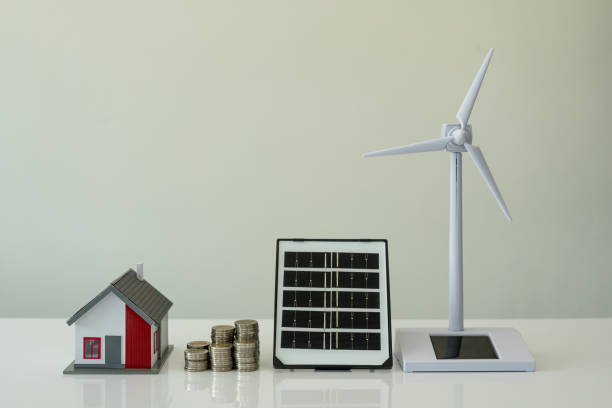
As technology advances and manufacturing processes improve, the cost of small wind turbines continues to decrease, making them more accessible to a broader range of consumers. Additionally, many regions offer incentives, tax credits, and subsidies to encourage the adoption of renewable energy systems, further enhancing the financial attractiveness of small wind turbines.
Scalability and Adaptability:
One of the defining features of small wind turbines is their scalability. Whether installed on residential rooftops, agricultural fields, or remote off-grid locations, these turbines come in various sizes and designs to suit different environments and energy needs. Their adaptability allows for customization based on local wind conditions, energy demands, and available space. This flexibility ensures that small wind turbines can be integrated seamlessly into diverse settings, from urban landscapes to rural communities, catering to the unique requirements of each location.
Types of Small Wind Turbines
Small wind turbines come in various shapes and configurations, each tailored to specific environments and energy requirements. Understanding the differences between these types is crucial for making informed decisions about their implementation. Let’s explore the two primary categories of small wind turbines: Horizontal Axis Wind Turbines (HAWTs) and Vertical Axis Wind Turbines (VAWTs), along with the emerging concept of hybrid wind turbines.
Horizontal Axis Wind Turbines (HAWTs):
HAWTs are the most common type of wind turbines, recognizable by their classic three-blade design mounted on a horizontal axis. This design allows the turbine to rotate like a weather vane, always facing into the wind. The kinetic energy from the moving air causes the blades to spin, driving an internal generator to produce electricity.
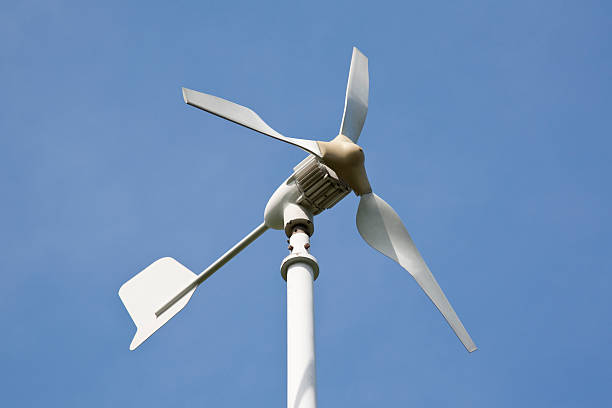
HAWTs are highly efficient and typically generate a stable output of electricity. They are ideal for areas with consistent and strong prevailing winds, making them popular choices for both residential and commercial applications.
Advantages of HAWTs:
- High efficiency in capturing wind energy.
- Well-established technology with a wide range of available models.
- Suitable for areas with consistent wind patterns.
Limitations of HAWTs:
- Require a minimum wind speed to start generating electricity.
- Susceptible to damage in high winds, requiring robust safety mechanisms.
Vertical Axis Wind Turbines (VAWTs):
VAWTs, in contrast to HAWTs, have their blades mounted on a vertical axis, resembling an eggbeater or a carousel. This design allows VAWTs to capture wind from any direction, making them ideal for areas with turbulent or variable wind patterns.
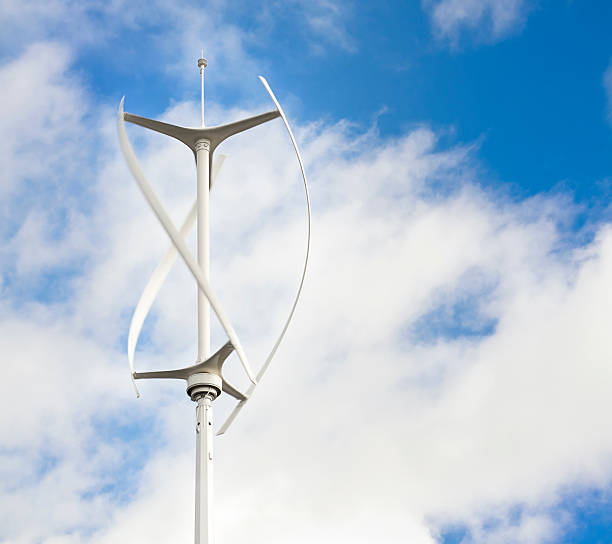
VAWTs are often more compact and can be installed at lower heights, making them suitable for urban environments and locations where space is limited. While they are generally less efficient than HAWTs, VAWTs excel in versatility and can generate power even in challenging wind conditions.
Advantages of VAWTs:
- Capture wind from any direction, making them suitable for variable wind patterns.
- Can be installed at lower heights, making them practical for urban areas.
- Less impact on wildlife due to slower blade tip speeds.
Limitations of VAWTs:
- Generally lower efficiency compared to HAWTs.
- Complex mechanical systems may require more maintenance.
Hybrid Wind Turbines:
Hybrid wind turbines combine the features of both HAWTs and VAWTs, leveraging the strengths of each design to maximize energy capture. These turbines often have two sets of blades, one set rotating on a horizontal axis and another on a vertical axis. By harnessing wind energy from multiple directions, hybrid turbines enhance overall efficiency and stability. They are especially useful in locations where wind patterns are unpredictable or vary throughout the day.
Advantages of Hybrid Wind Turbines:
- Improved efficiency by capturing wind from multiple directions.
- Enhanced stability in variable wind conditions.
- Greater flexibility in installation locations.
Limitations of Hybrid Wind Turbines:
- More complex design and mechanical components, potentially leading to higher maintenance requirements.
- Higher initial cost due to the complexity of the hybrid system.
Understanding the differences between these types of small wind turbines is essential for selecting the most suitable option based on specific project requirements and local wind conditions.
Innovative Small Wind Turbine Designs
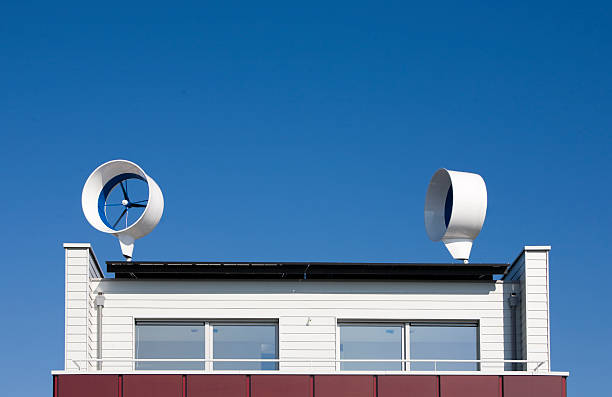
The evolution of small wind turbine technology is marked by continuous innovation, pushing the boundaries of efficiency, reliability, and environmental sustainability. As researchers and engineers delve deeper into the science of wind energy, new designs and concepts are emerging, promising to revolutionize the way we harness the power of the wind. In this section, we’ll explore some of the most innovative small wind turbine designs that are reshaping the renewable energy landscape.
Blade Designs:
Traditionally, wind turbine blades have been designed with a focus on aerodynamics, aiming to capture as much wind energy as possible. However, modern innovations in blade design are revolutionizing the efficiency of small wind turbines. Researchers are experimenting with novel blade shapes, such as swept-back and curved designs, to optimize energy capture across a broader range of wind speeds. Additionally, advancements in materials science have led to the development of lightweight yet durable materials, reducing the weight of turbine blades and improving overall performance.
Materials and Manufacturing:
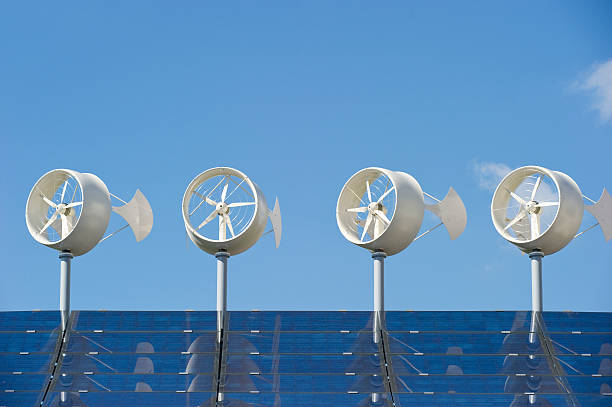
The materials used in small wind turbine construction play a significant role in their efficiency and longevity. Innovative materials, such as carbon fiber composites and advanced polymers, are being employed to create blades that are not only lightweight but also highly resistant to wear and tear. Moreover, 3D printing technology is revolutionizing the manufacturing process, allowing for intricate and customized turbine components. By utilizing sustainable and recyclable materials, researchers are reducing the environmental impact of turbine production while enhancing their efficiency.
Smart Wind Turbines:
The integration of Internet of Things (IoT) technology and smart sensors is transforming small wind turbines into intelligent, self-monitoring systems. These smart turbines are equipped with sensors that collect real-time data on wind speed, direction, turbine rotation speed, and power output. This data is analyzed using artificial intelligence algorithms to optimize turbine performance in varying wind conditions. Smart turbines can adjust their orientation and blade pitch in real time, ensuring maximum energy capture while minimizing wear and tear. Additionally, remote monitoring capabilities enable proactive maintenance, reducing downtime and improving overall efficiency.
Vertical Axis Wind Turbines (VAWTs) with Helical Blades:
A notable innovation in VAWTs involves the use of helical-shaped blades. Unlike traditional straight blades, helical blades have a twisted, corkscrew-like shape. This design allows VAWTs to capture wind from various angles, improving efficiency in turbulent wind conditions. Helical blades also operate quietly, making them suitable for urban environments where noise pollution is a concern. By combining the versatility of VAWTs with helical blade technology, researchers are enhancing the adaptability and performance of small wind turbines in diverse settings.
These innovative designs represent just a glimpse into the future of small wind turbines. As research and development efforts continue to advance, we can expect even more groundbreaking discoveries that will further optimize the efficiency, sustainability, and affordability of small wind energy systems.
Challenges and Solutions in Small Wind Turbine Implementation
While small wind turbines offer numerous benefits, their widespread adoption is not without challenges. Addressing these challenges is crucial to maximizing the potential of small wind energy systems and ensuring their seamless integration into the global energy landscape. Let’s explore some of the key challenges faced in the implementation of small wind turbines and the innovative solutions that are being developed to overcome these obstacles.
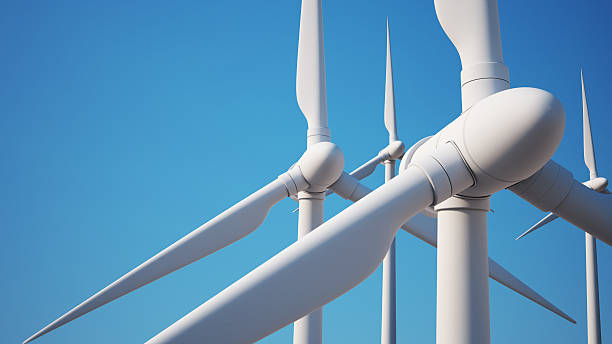
Technical Challenges:
Small wind turbines require specific wind conditions to operate efficiently. Low wind speeds can lead to insufficient power generation, while high winds can cause mechanical stress and damage to the turbine. Engineers are continuously working to design turbines with variable pitch blades and automatic yaw systems, allowing the turbines to adjust their orientation and blade angles in response to changing wind speeds. Additionally, advancements in aerodynamics and materials science are enhancing the overall performance and durability of small wind turbines, making them more resilient in diverse wind conditions.
Regulatory and Policy Challenges:
Navigating the regulatory landscape is a significant hurdle for small wind turbine installations. Zoning laws, permitting processes, and grid connection regulations vary widely between regions and countries. Streamlining these regulations and providing standardized permitting procedures can significantly reduce the administrative burden on individuals and organizations looking to invest in small wind energy systems.

Furthermore, policymakers can incentivize small wind turbine adoption through tax credits, grants, and subsidies, making these systems more accessible and financially viable for consumers.
Community Engagement and Public Perception:
Community acceptance and public perception play a vital role in the successful deployment of small wind turbines. Educating the public about the benefits of wind energy, dispelling common myths, and showcasing real-life success stories can help build trust and support within communities.

Engaging local residents in the decision-making process, addressing their concerns, and involving them in the planning stages of small wind projects can foster a sense of ownership and pride, leading to greater acceptance and cooperation.
Maintenance and Technical Support:
Ensuring the proper maintenance of small wind turbines is essential for their long-term sustainability. However, maintenance can be a challenge, especially in remote or off-grid locations. To address this issue, manufacturers are developing self-diagnostic systems and remote monitoring capabilities. These systems can detect anomalies in turbine performance and alert operators in real time, allowing for timely maintenance and minimizing downtime. Additionally, the availability of local technical support and training programs can empower communities to troubleshoot minor issues, reducing the reliance on external maintenance services.
By addressing these challenges through technological innovation, supportive policies, community engagement, and accessible technical support, the implementation of small wind turbines can be significantly enhanced.
Overcoming these hurdles not only ensures the reliable operation of existing installations but also paves the way for the widespread adoption of small wind energy systems, contributing to a more sustainable and resilient energy future.
Future of Small Wind Turbine Designs
As the global demand for clean, renewable energy continues to rise, the future of small wind turbine designs holds promise for transformative advancements. Innovations driven by research, technology, and sustainability are shaping the next generation of these compact power generators. Here’s a glimpse into the future, highlighting emerging trends and potential developments in small wind turbine designs.
Advanced Materials and Manufacturing Techniques:
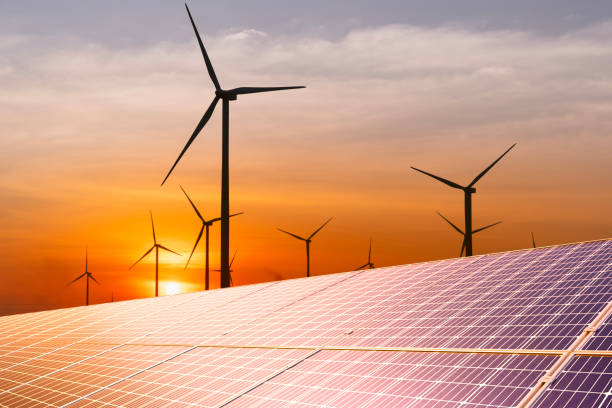
Integrated Energy Storage Systems:
The development of lightweight, durable, and eco-friendly materials will revolutionize small wind turbine designs. Advanced composite materials, such as carbon fiber reinforced polymers, are becoming more accessible, enabling the construction of longer, stronger, and more efficient turbine blades. Additive manufacturing techniques, including 3D printing, will continue to evolve, allowing for intricate and customized turbine components. These innovations will enhance performance while reducing the environmental impact of manufacturing processes.
The integration of energy storage systems, such as advanced batteries and supercapacitors, will be a game-changer for small wind turbines. By storing excess energy generated during high wind periods, these systems can provide a stable power supply during low wind periods or even during power outages. Smart grid technologies will enable seamless energy storage and distribution, ensuring a reliable electricity supply for both grid-connected and off-grid small wind turbine installations.
Hybrid Systems and Microgrids:
Hybrid energy systems that combine small wind turbines with solar panels, energy storage, and other renewable sources will become more prevalent. These integrated systems can balance energy generation across various weather conditions, maximizing efficiency and reliability. Additionally, small wind turbines will play a significant role in microgrid development, providing localized, resilient power solutions for communities, industrial complexes, and remote installations. Microgrid networks will enhance energy security, reduce transmission losses, and promote self-sufficiency.
Innovations in Vertical Axis Wind Turbines (VAWTs):
Vertical axis wind turbines are undergoing continuous innovation, making them more efficient, quieter, and adaptable to diverse environments. Helical and helical-spiral blade designs, inspired by biomimicry, are being explored to optimize energy capture from changing wind directions. Research into magnetic levitation systems for VAWTs aims to reduce friction and mechanical wear, improving overall efficiency and extending the lifespan of the turbines. These advancements will make VAWTs more competitive and suitable for a wider range of applications.
Internet of Things (IoT) and Artificial Intelligence (AI) Integration:
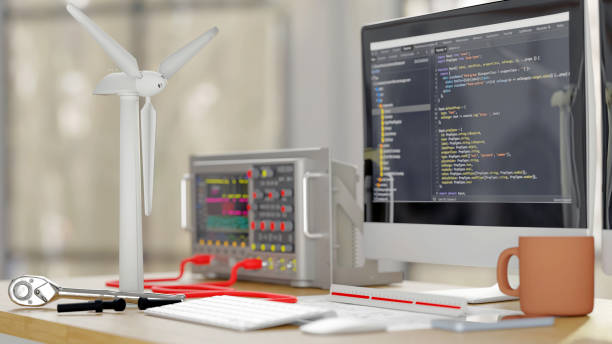
The integration of IoT sensors and AI algorithms will enable small wind turbines to operate autonomously and intelligently. IoT sensors will collect real-time data on wind patterns, turbine performance, and environmental conditions. AI algorithms will analyze this data to optimize turbine orientation, blade pitch, and energy output in real time. Predictive maintenance models powered by AI will anticipate component wear, reducing downtime and maintenance costs. These smart technologies will enhance efficiency, reliability, and overall performance.
Conclusion: Embracing Small Wind Turbines for a Sustainable Tomorrow
As we move forward, it is essential for governments, industries, and communities to collaborate in supporting the growth of small wind energy systems. Policymakers can create favorable regulatory environments and offer incentives to encourage adoption. Researchers and engineers can continue their explorations into innovative designs and materials, pushing the boundaries of efficiency. Community engagement and education are key to fostering acceptance and understanding, paving the way for widespread adoption.
In embracing small wind turbines, we are not merely investing in technology; we are investing in a cleaner, healthier planet for future generations. Each blade’s turn represents a step toward reducing our reliance on finite fossil fuels and mitigating the impacts of climate change. By harnessing the power of the wind, we are not only generating electricity; we are generating hope—hope for a world where sustainable energy is accessible to all, where communities thrive, and where nature and technology coexist harmoniously.
Let us, therefore, embrace the promise of small wind turbines and work together to usher in an era where clean, renewable energy becomes the heartbeat of our societies. Together, we can harness the wind’s boundless energy, ushering in a future that is not just powered by the wind, but powered by the collective will and determination to create a better, more sustainable world for all.




